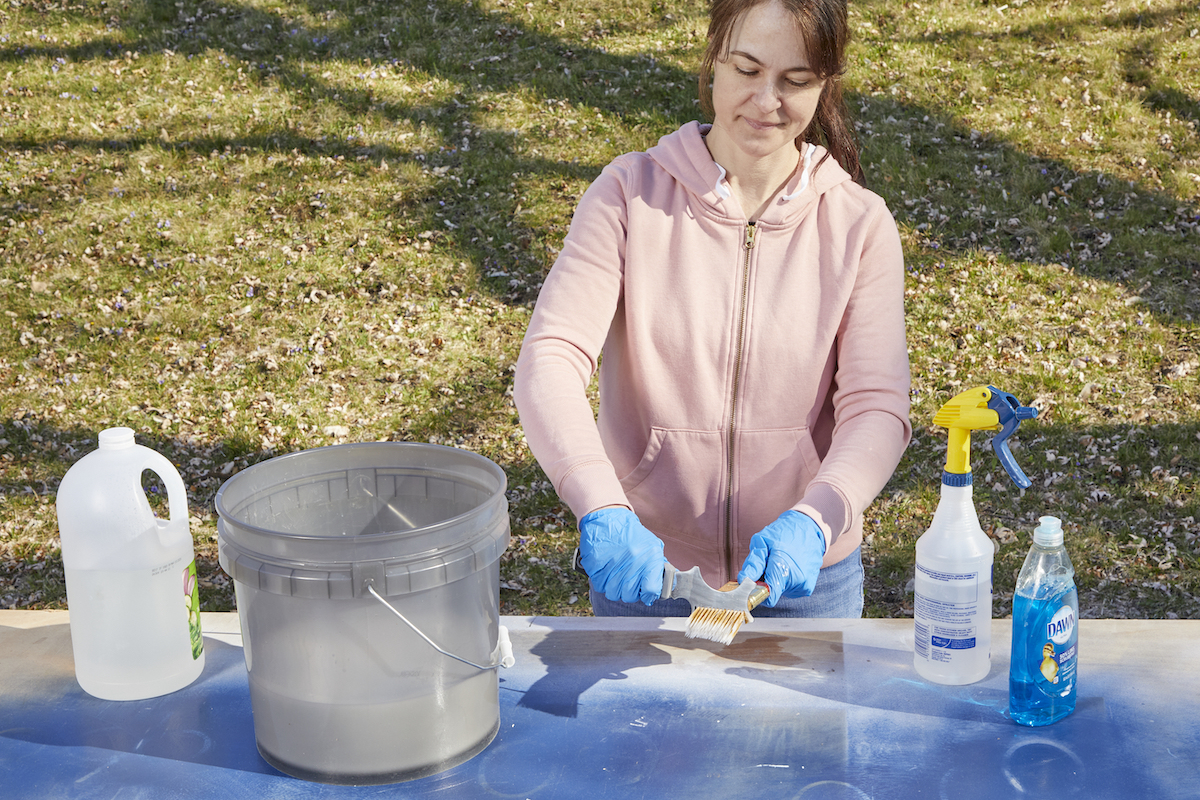We may earn revenue from the products available on this page and participate in affiliate programs. Learn More ›
After completing a big painting project, you may be tempted to put your feet up and leave the cleanup until later. You’ll be much better off, however, if you take the time immediately after finishing the job to properly clean your paint brushes. Here’s what you’ll need to do it right.
Tools & Materials
Bobvila.com may earn a commission from purchases made through these links.
- Paint brush and roller cleaner tool, or brush comb
- Vinegar
- Dish soap
- Turpentine, paint thinner, or mineral spirits (if using oil-based paints)
Project Overview
Working Time: 20 minutes
Total Time: 1 hour
Skill Level: Beginner
Estimated Cost: $30
Before You Begin
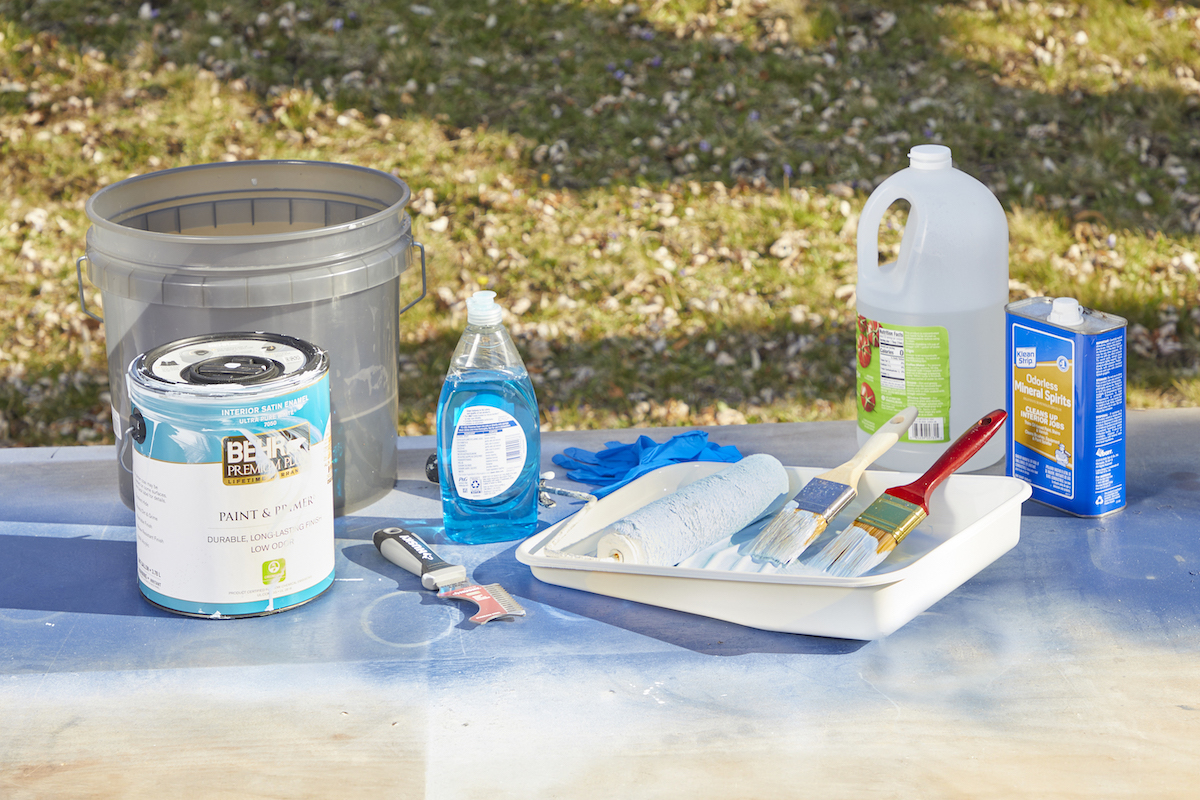
As you gather the painting supplies to begin your project, go ahead and pull out all the cleanup supplies, too, so everything’s ready to go. If you are using oil-based paints, you’ll need to use stronger cleaning agents, so plan on cleaning your brushes in a well-ventilated area.
Step 1: Identify the type of paint used on the brush so you can use the proper cleaner.
The first step in learning how to clean paint from paint brushes is to note whether you are using acrylic, latex, or oil-based paint. Acrylic and latex paints are water-based and are cleaned from brushes differently than oil-based paints.
Latex paint is typically used indoors, usually on walls. Latex may also be used on concrete, stucco, aluminum siding, and wood. Acrylic paint is more durable than latex and is water-resistant when dry, so it’s often used in bathrooms, on cabinets and trim. Acrylic paint is also commonly used on outdoor surfaces, such as wood siding. Oil-based paint, the most durable of the three types, is used on exterior house trim, and indoors on cabinets, trim, and doors.
To clean paint brushes that were used with latex or acrylic paint, have warm water and dish soap available. For oil-based paint, you’ll need a stronger chemical paint brush cleaner, such as turpentine, mineral spirits, or paint thinner.
Step 2: Clean the brushes.
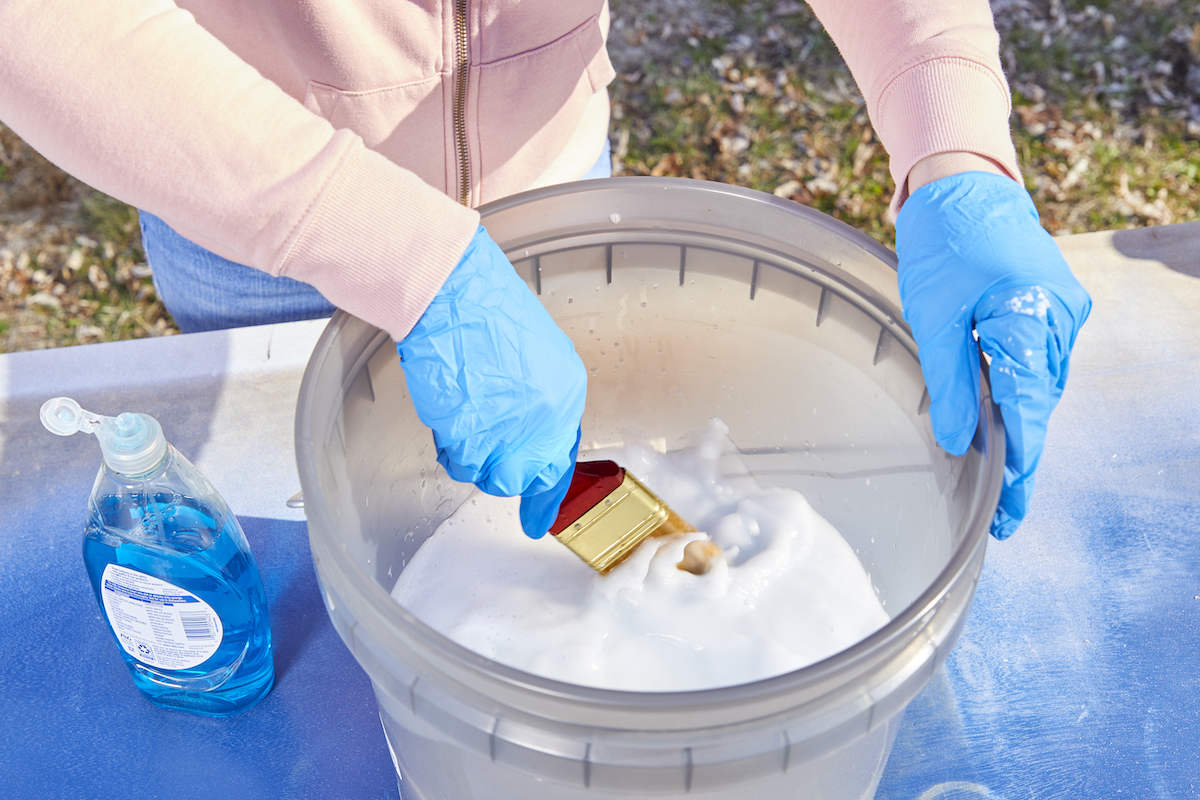
If the brushes were used to apply water-based paint:
When you’ve completely finished painting, “Rinse the paint brush under running water or swirl it in a container to remove excess paint,” says Paige NeJame, owner of CertaPro Painters, which serves the greater South Shore area of Massachusetts.
Continue rinsing the brush until the water runs clear before moving to the next step, NeJame advises. “Use mild soap and water to wash the bristles thoroughly, gently massaging to remove any remaining paint,” she says, and wear gloves if that’s more comfortable for you. She notes that you can do an even deeper clean by soaking brushes in a bucket of very hot, soapy water for an hour or so.
If the brushes were used to apply oil-based paint:
Be sure you’re in a well-ventilated area when using chemical cleaners to clean brushes. “Pour a small amount of paint thinner or mineral spirits into a container,” says NeJame. Next, she says, “Swirl the brush in the solution, ensuring all bristles are coated.”
Wipe excess paint thinner off the brush onto a rag or paper towel, NeJame adds, and continue swirling and wiping until all the paint is off the brush.
“Wash the brush with soap and water after using mineral spirits” or other similar cleaners, says Shlomo Cherniak, owner of Cherniak Home Services, a handyman service in the Baltimore area.
NeJame urges caution when using rags with chemical cleaners. “Rags with mineral spirits on them can combust,” she says. “It’s important that they not be left in a pile where this is more likely to happen.”
Step 3: Clean dried paint from brushes.
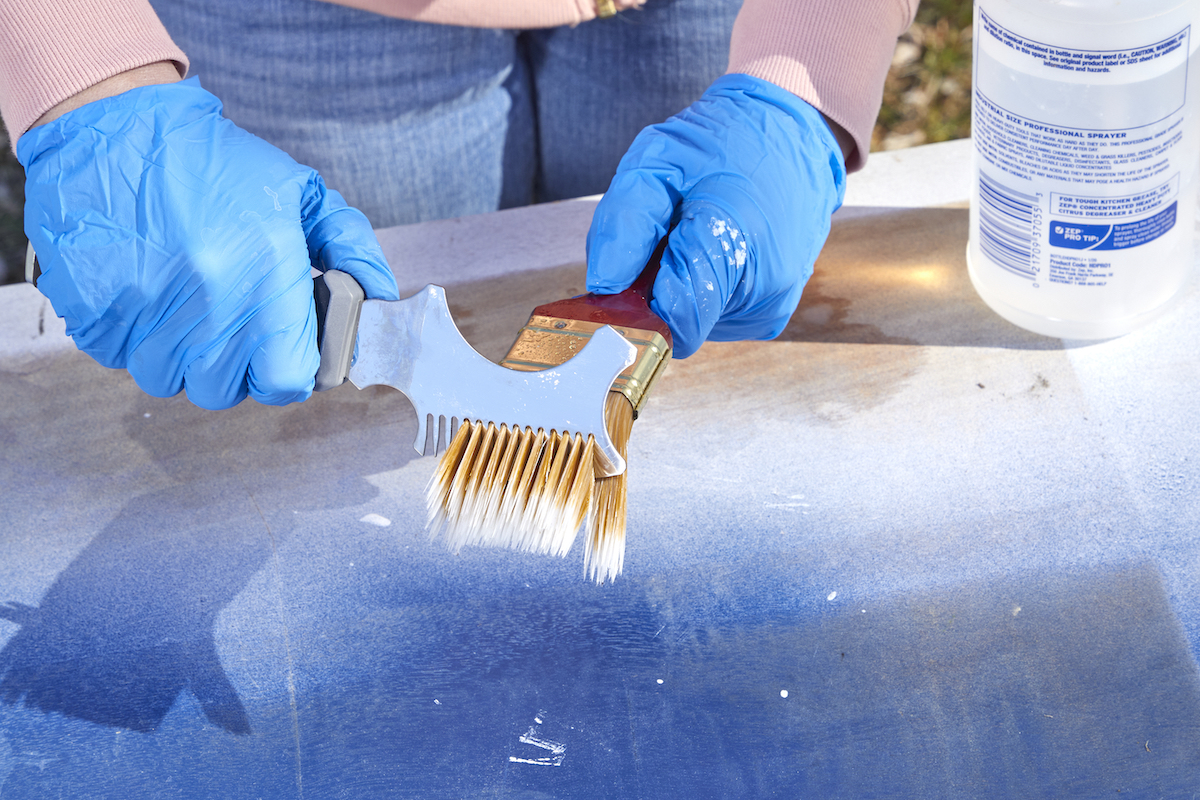
If you didn’t get the brushes clean right after completing your project, it’s OK. You still have a good chance of salvaging brushes clotted with dried-on paint.
Andre Kazimierski, CEO of Improovy Painters in Glenview, Illinois, recommends using vinegar, that multitasking pantry staple. “Distilled white vinegar can be a great DIY option for cleaning paint brushes, especially those with paint dried and hardened into the bristles,” he says. “It can also be good for brushes which have been cleaned improperly or incompletely in the past.”
When considering how to clean dried paint brushes, Kazimierski suggests soaking caked-on brushes in vinegar until the bristles soften. “Then use your fingers to work free the loosened paint,” he says, or use a wire comb. Paint manufacturer Glidden suggests heating the vinegar until it’s hot, but not boiling, before soaking your brush.
Step 4: Hang the brushes to dry.
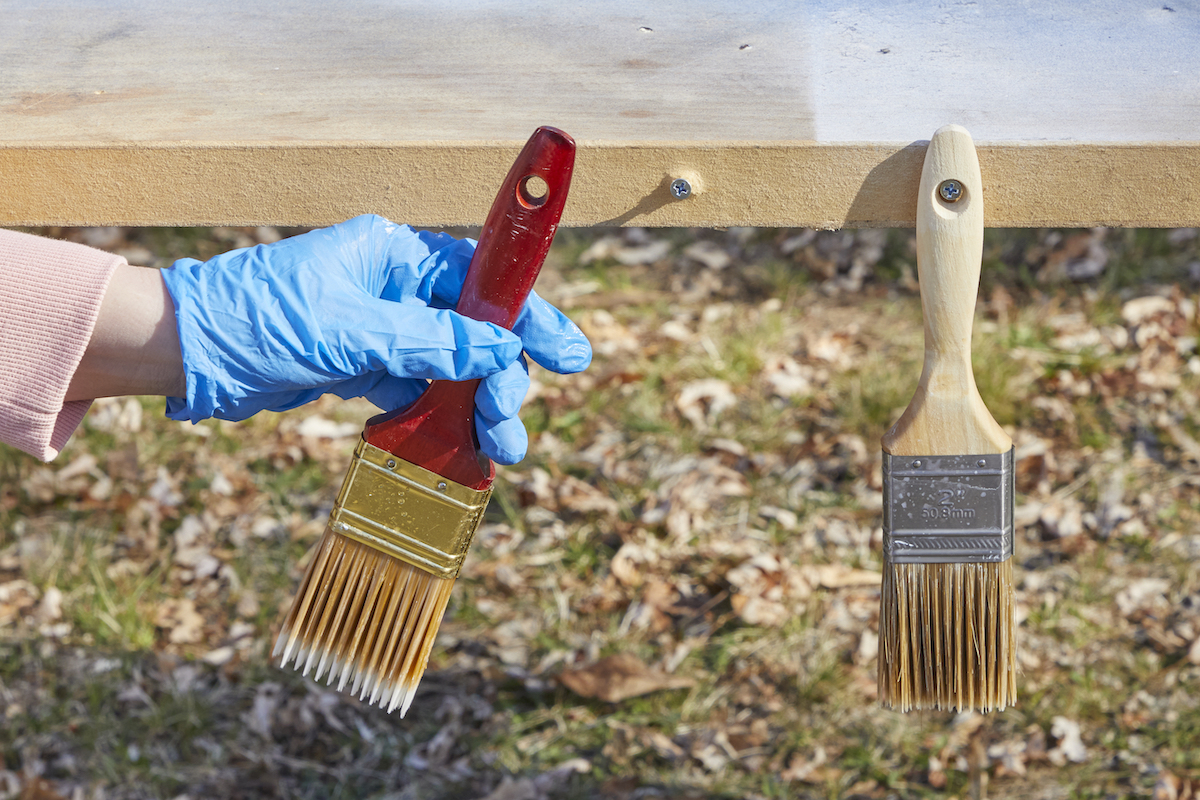
When your brushes are clean, use your fingers to gently coax the bristles back into their initial shape, says NeJame. “Then pat the brush dry with a paper towel and let it air-dry.”
“To dry brushes, avoid laying them flat on a surface that could impede their ability to completely dry,” says Samantha Cirino, a category manager with Glidden by PPG Paints. “Instead, hang them or set them upright in a can or container.”
How to Clean Paint Rollers
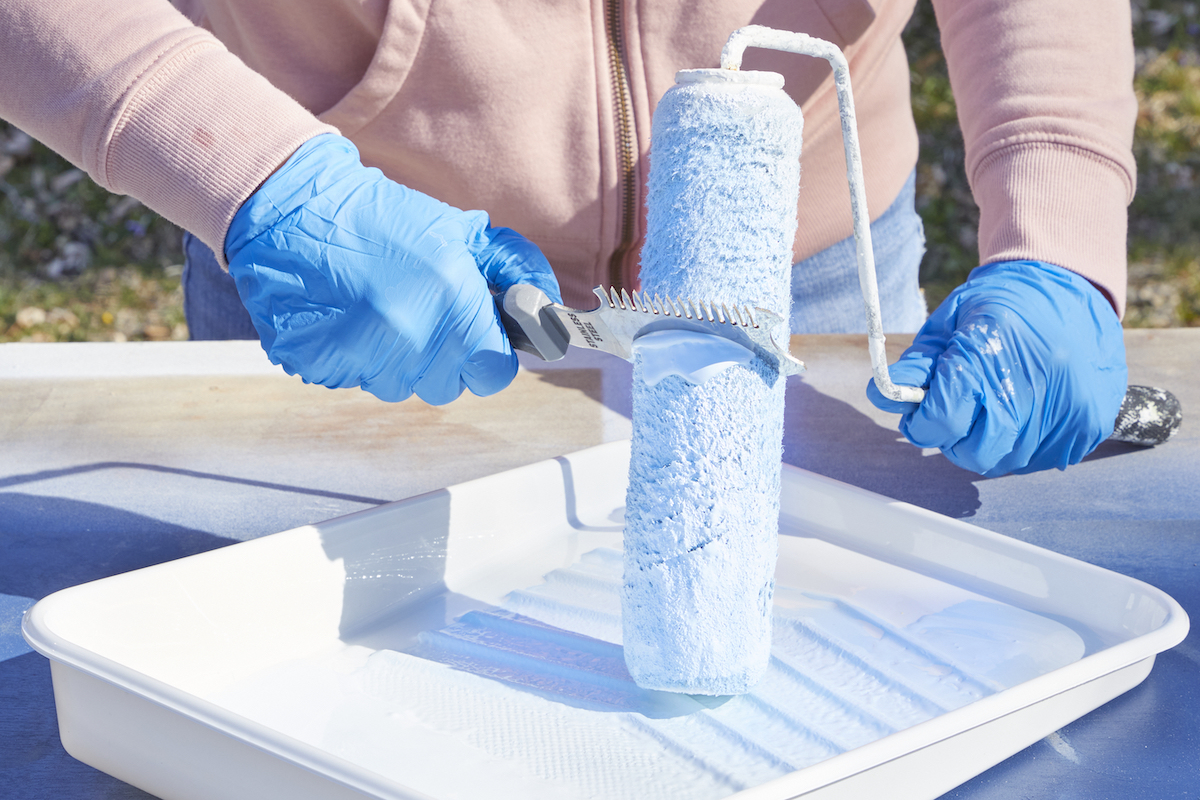
If you used a paint roller for your project, there’s no need to throw away the roller cover. Here’s how to clean it:
- Using a putty knife or a roller cleaning tool, scrape excess paint off the roller and back into the paint can.
- Fill a bucket with hot water and a few drops of dish soap.
- Wearing rubber gloves, remove the roller cover from the frame and place it in the bucket.
- Place the frame in the bucket too.
- After about 20 minutes, remove the roller frame and clean it with a stiff-bristle brush.
- Rinse the roller frame thoroughly and set aside to dry.
- Work the paint out of the roller cover with your hands.
- When the paint has been worked out of the roller cover, rinse it thoroughly.
- Shake out as much water as you can.
- Stand the roller cover on end to let it dry.
- Once it’s dry, wrap the roller cover in plastic wrap for storage.
How to Make Paint Brushes Last Longer
Quality paint brushes will live on to paint many more surfaces if you take good care of them.
- When a brush is completely dry, put it back in the cardboard wrapper that it came with.
- If you don’t have the original packaging, wrap the bristles in newspaper, paper towels, or two pieces of cardboard held together by a rubber band.
- Hang your brushes with the bristles pointing down. Many brushes have a hole in the handle that will allow you to hang them from a screw or nail.
- Alternatively, store brushes lying flat.
- Errant bristles that won’t group with the others should be cut off.
If you simply cannot get a brush thoroughly clean, or if too many bristles refuse to lie flat, it may be time to replace the brush.

